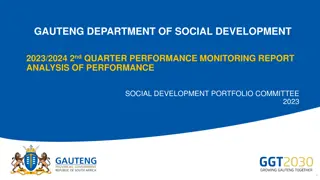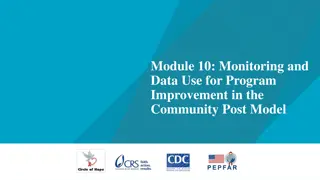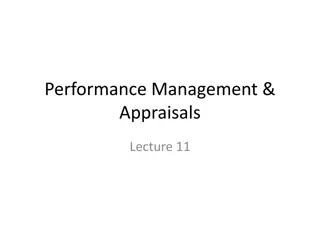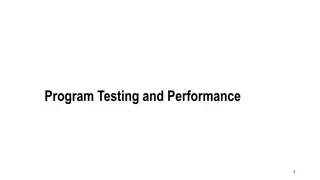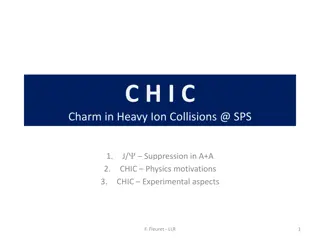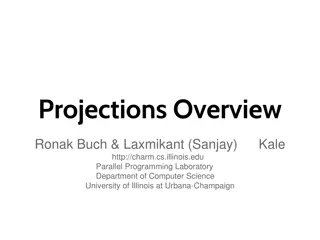Strategies for Improving Charm++ Program Performance
Explore strategies for identifying, measuring, fixing, and demonstrating the effectiveness of solutions for poor performance in Charm++ programs. Key ideas include starting with a high-level overview, choosing metrics, and iteratively testing solutions guided by performance data. The case studies highlight the importance of load balancing in optimizing program performance.
Download Presentation

Please find below an Image/Link to download the presentation.
The content on the website is provided AS IS for your information and personal use only. It may not be sold, licensed, or shared on other websites without obtaining consent from the author. Download presentation by click this link. If you encounter any issues during the download, it is possible that the publisher has removed the file from their server.
E N D
Presentation Transcript
Case Studies with Projections Ronak Buch & Laxmikant (Sanjay) http://charm.cs.illinois.edu Parallel Programming Laboratory Department of Computer Science University of Illinois at Urbana-Champaign Kale 11th Workshop of the INRIA-Illinois-ANL JLPC, Sophia Antipolis, France June 12, 2014
Basic Problem We have some Charm++ program Performance is worse than expected How can we: o Identify the problem? o Measure the impact of the problem? o Fix the problem? o Demonstrate that the fix was effective?
Key Ideas Start with high level overview and repeatedly specialize until problem is isolated Select metric to measure problem Iteratively attempt solutions, guided by the performance data
Key Ideas Start with high level overview and repeatedly specialize until problem is isolated Select metric to measure problem Iteratively attempt solutions, guided by the performance data
Stencil3d Basic 7 point stencil in 3d 3d domain decomposed into blocks Exchange faces to neighbors Synthetic load balancing experiment Calculation repeated based on position in domain
No Load Balancing Clear load imbalance, but hard to quantify in this view
No Load Balancing Clear that load varies from 90% to 60%
Next Steps Poor load balance identified as performance culprit Use Charm++ s load balancing support to evaluate the performace of different balancers Trivial to add load balancing o Relink using -module CommonLBs o Run using +balancer <loadBalancer>
GreedyLB Much improved balance, 75% average load
RefineLB Much improved balance, 80% average load
Multirun Comparison Greedy on left, Refine on right.
ChaNGa Charm N-body GrAvity solver Used for cosmological simulations Barnes-Hut force calculation Following data uses dwarf dataset on 8K cores of Blue Waters dwarf dataset has high concentration of particles at center
Original Time Profile Why is utilization so low here?
Original Time Profile Some PEs are doing work.
Next Steps Are all PEs doing a small amount of work, or are most idle while some do a lot? Outlier analysis can tell us o If no outliers, then all are doing little work o If outliers, then some are overburdened while most are waiting
Outlier Analysis Large gulf between average and extrema => Load imbalance
Next Steps Why does this load imbalance exist? What are the busy PEs doing and why are other waiting? Outlier analysis tells us which PEs are overburdened Timeline will show what methods those PEs are actually executing
Original Message Count Wrote new tool to parse Projections logs. Large disparity of messages across processors.
Next Steps Can we distribute the work? After identifying the problem, the code revealed that this was caused by tree node contention. To solve this, we tried randomly distributing copies of tree nodes to other PEs to distribute load.
Final Message Count Used to have 30000+ messages on some PEs, now all process <5000. Much better balance.



